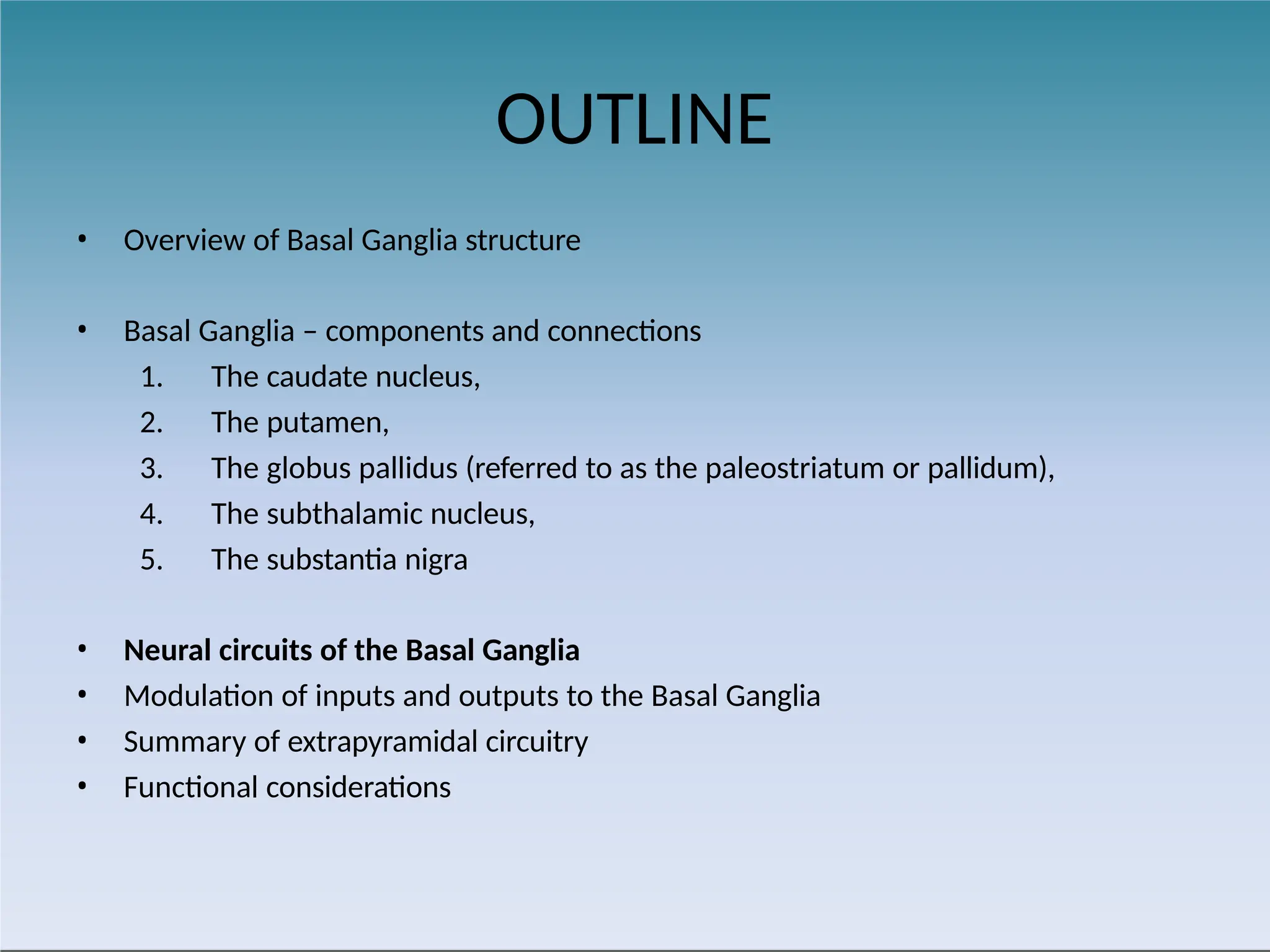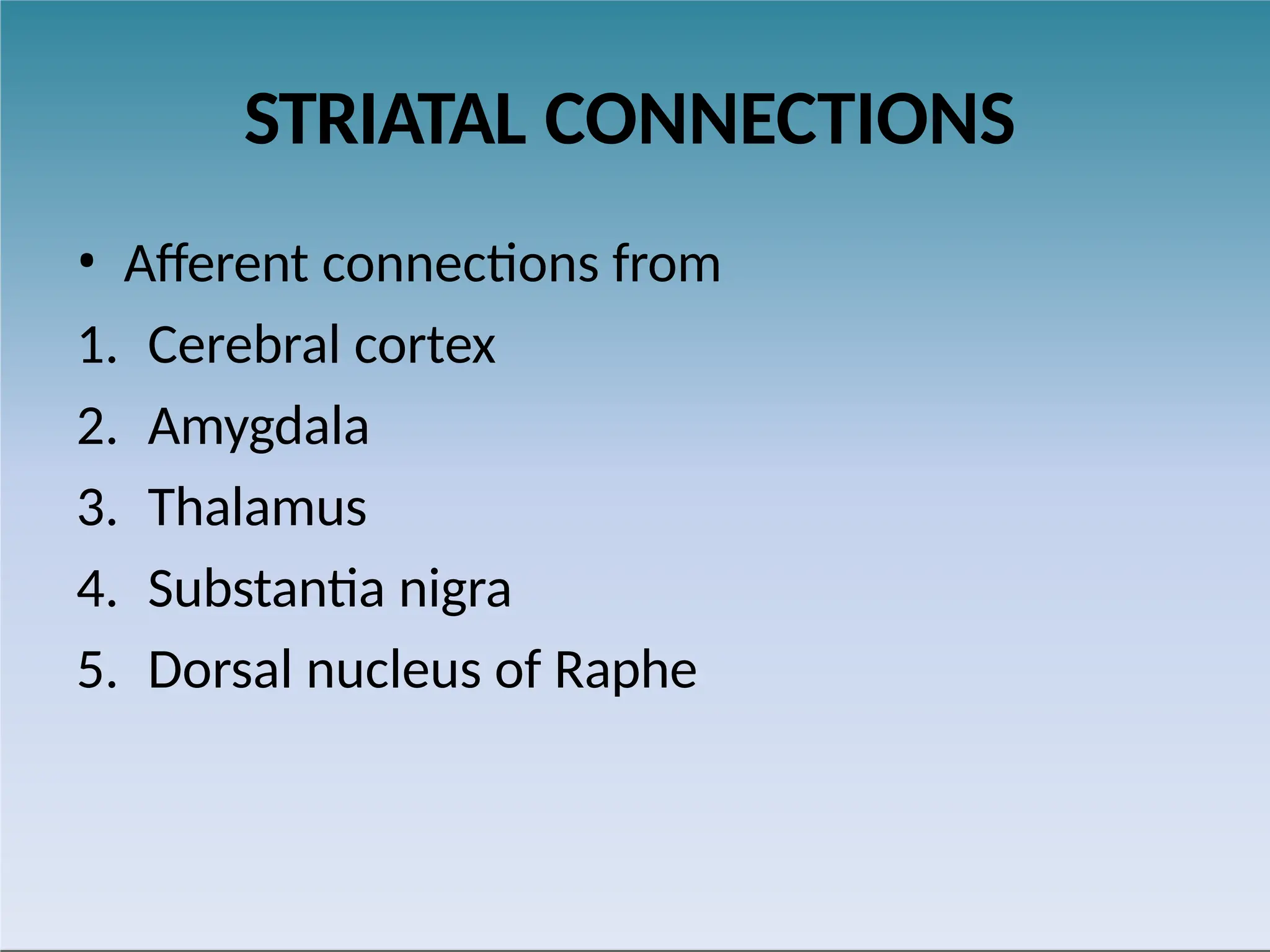This document provides a comprehensive overview of the basal ganglia, detailing its structure, components, and their roles in regulating movement, cognitive functions, and various movement disorders such as dyskinesias. It discusses the neural circuits and connections involved, including the caudate nucleus, putamen, globus pallidus, subthalamic nucleus, and substantia nigra, highlighting their functions and neurotransmitters. Additionally, the document explores the implications of basal ganglia damage in psychiatric diseases and disorders, illustrating the complex interactions within the brain's motor and cognitive systems.




























































